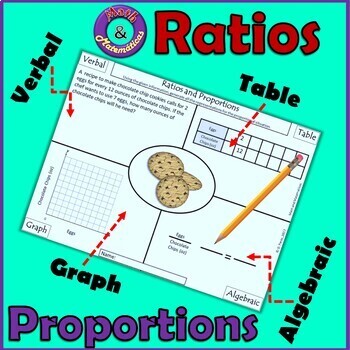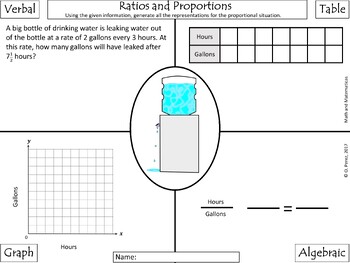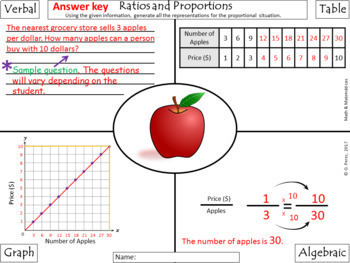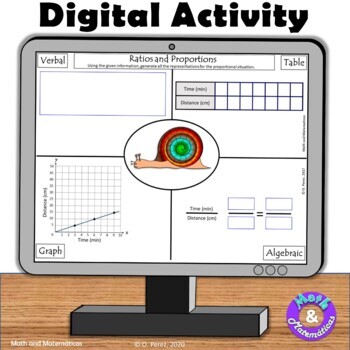Ratios and Proportions in Real Life Situations - Print and Digital Activity
- PDF
- Internet Activities
What educators are saying
Also included in
- This ratios and proportions bundle includes 3 activities:Ratios and Proportions Task Cards:This activity includes 12 task cards to practice ratios and proportions. the task cards have different levels and representations. Contains real life word problems, tables and equivalent ratios.A student recorPrice $9.75Original Price $11.85Save $2.10
Description
- This ratios and proportions activity includes print and digital versions ( google slides ). The activity includes rates and equivalent ratios using real life word problems. The activity is ideal for 6th and 7th grade classrooms. The proportional relationships are represented in 4 different forms: verbal description, equivalent ratio tables, graphing and algebraic proportions.
- Using the given information, the students will generate the other 3 representations ( verbal, table, graph and/or algebraic) for the proportional situation.
-The students will solve the proportions using the constant of proportionality or scale factor.
-The activity is differentiated.
This activity can be used in a workstation (Math center), homework or whole class activity.
Content:
- 4 pages with a verbal description.
- 2 pages with a table representation.
- 2 pages with a graph representation.
- 2 pages with a picture representation.
- 2 pages with an algebraic representation.
- 1 blank page for the students or teacher to create a ratios and proportions problem.
Answer key included.
Aligned to Texas standards TEKS 6.4C, 6.4D and 6.4E
Click here to follow me and receive notifications when I add new products.
********************************************************************************************
You might also be interested in:
Ratios Students Notes for the interactive notebook






